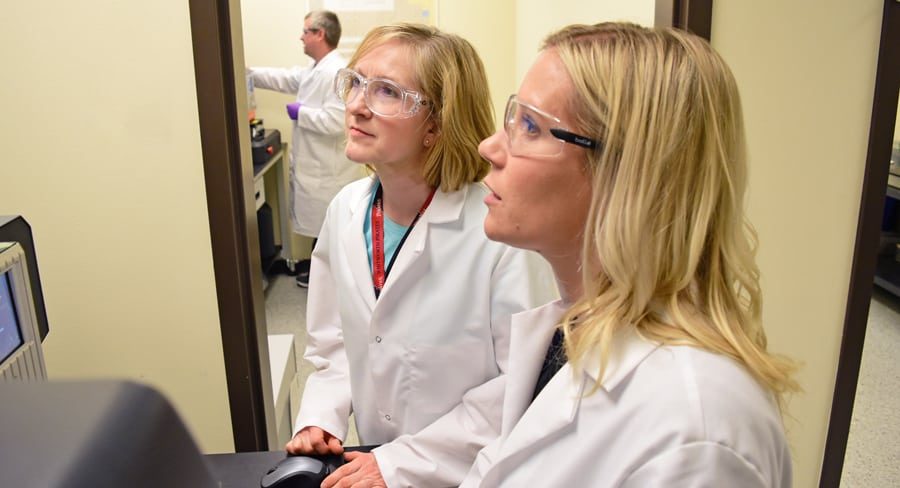
Home » Columbia Basin College offers space to train vit plant lab workers
Columbia Basin College offers space to train vit plant lab workers

September 13, 2018
The U.S. Department of Energy and Bechtel National Inc. are collaborating with Columbia Basin College in Pasco to help prepare chemists for their work at the Hanford Waste Treatment and Immobilization Plant’s analytical laboratory.
The 3,300-square-foot laboratory at CBC will be used to prepare the analytical laboratory’s future staff for work at the vit plant at the Hanford nuclear reservation.
The lab will start developing the processes that will be used to support low-activity waste vitrification by a court-ordered milestone of 2023. Bechtel set up the lab at CBC so chemists and laboratory specialists can train with the same equipment that will be eventually transferred to the vit plant’s analytical laboratory.
“They are developing the methods, processes and procedures today that we’ll need at the analytical laboratory in the future to perform the direct feed low-activity waste commissioning work,” said Brian Vance, manager of the DOE Office of River Protection, in a release. “This is a key step in preparations to bring the vitrification plant online, begin making glass and continue moving forward in our Hanford cleanup mission.”
The CBC lab’s key function is to confirm that all glass produced by the Low Activity Waste facility, or LAW, meets regulatory requirements and standards.
During direct feed low-activity waste operations, the analytical laboratory will analyze about 3,000 process samples each year.
Analyses will confirm the correct glass-former “recipe” needed to produce a consistent glass form. Samples also will be taken throughout the vitrification process to confirm a high-quality glass product and good process controls.
“We are in the early hiring and training phases for the laboratory technical staff that will eventually be transferred from the CBC lab to the waste treatment plant’s large analytical laboratory at the Hanford site,” said Brian Reilly, a Bechtel senior vice president and Bechtel’s director for the waste treatment plant roject. “Through our work here at CBC, we are preparing the future laboratory work force for the plant’s cold and hot commissioning phases.”
During the cold commissioning phase, a waste-like simulant will be run through the Low Activity Waste Facility. Then, a hot-commissioning vitrification phase will begin turning low-activity radioactive tank waste into sturdy glass.
“It’s an honor to know that work supporting the Hanford cleanup mission is happening here at Columbia Basin College,” said Rebekah Woods, CBC president. “It’s great that our campus can be a community resource for companies who are training the next generation of Hanford’s work force.”
The direct feed low-activity waste approach uses key facilities of the waste treatment plant, including the LAW facility.
Construction is largely complete for the vit plant’s LAW facility, analytical laboratory and a collection of more than 20 support facilities. In addition, some portions of the LAW facility, the laboratory and support facilities are undergoing systems testing and startup activities.
Local News Education & Training
KEYWORDS september 2018





